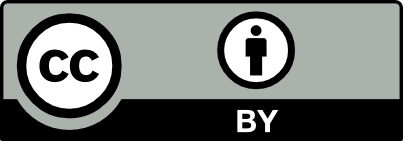Consumer understanding of nutrition labeling: the triangle alert model
DOI:
https://doi.org/10.22239/2317-269X.01434Keywords:
Food Labeling; Nutrition Labeling; Labeling Model; Consumer UnderstandingAbstract
Introduction: Several researchers and government entities have currently pointed out the proposal for the triangle alert model in nutritional labeling, in order to allow consumers to better understand the label. This proposal describes that information such as excess of ingredients or nutrients that are harmful to health be highlighted on the labels by colors and symbols (triangle) that draw the consumer’s attention. Objective: To analyze consumers’ understanding of the nutritional triangle alert labeling model in comparison with the label currently used in Brazil. Method: Cross-sectional study carried out with 108 adults, randomly approached for convenience, while participating in two health fairs that took place in a municipality in Minas Gerais in April and May of 2019. Participants were interviewed based on a questionnaire that, in addition to characterizing, sought to investigate their behavior regarding labeling and their understanding of the triangle nutritional labeling alert model. The interviewee was presented with two food labels (salted crackers and soy oil) elaborated from the triangle proposal. The results were analyzed by distribution frequency and associations between understanding the label and characteristics of the participants (Pearson’s chi-square test). Results: Among the participants, the majority were women, with higher education high school. The study showed that 81.00% understood that the frontal triangle warning indicated excess components in the food and 68.00% understood that the yellow highlight on the nutritional table indicated excess ingredient. When comparing the currently used label and the proposed triangle labeling, 88.00% of the respondents preferred the new proposal. Conclusions: There was a greater acceptance of the proposed nutritional labeling of warning in triangles in relation to the current label adopted in Brazil, specifcally due to the ease of reading and understanding of the label and the alert for the quantity and nutritional quality of the food.
Downloads
Downloads
Published
Issue
Section
License
Copyright (c) 1969 Health Surveillance under Debate: Society, Science & Technology (Vigilância Sanitária em Debate: Sociedade, Ciência & Tecnología) – “Visa em Debate”

This work is licensed under a Creative Commons Attribution-NonCommercial 4.0 International License.
COPYRIGHT ALLOWANCE The author (s) hereinafter designated as the ASSIGNOR hereby assign and transfer, free of charge, the ownership of the copyrights related to this ARTICLE to the Vigilância Sanitária em Debate: Sociedade, Ciência & Tecnologia (Health Surveillance under Debate: Society, Science & Technology) – Visa em Debate, represented by FUNDAÇÃO OSWALDO CRUZ, established at Av. Brasil, nº 4365, Manguinhos, Rio de Janeiro, RJ, Brazil, CEP 21045-900, under the conditions set out below: (a) The terms and conditions set forth in this Agreement shall apply to the following: 1. The ASSIGNOR declares that they s(he) is (are) the author (s) and owner (s) of the copyrighted property of the ARTICLE submitted. 2. The ASSIGNOR declares that the ARTICLE does not infringe the copyrights and / or other property rights of third parties, that the disclosure of images (if any) has been authorized and that they s(he) assume(s) full moral and / or property liability for its content, before third parties. 3. THE ASSIGNOR assigns and transfers all copyrights relating to the ARTICLE to the ASSIGNEE, especially the rights of editing, publication, translation into another language and reproduction by any process or technique. The ASSIGNEE becomes the exclusive owner of the rights related to the ARTICLE, and any reproduction, totally or partially, is prohibited in any other means of publicity, printed or electronic, without prior written authorization from the ASSIGNEE. 4. The assignment is free and, therefore, there will be no remuneration for the use of the ARTICLE by the ASSIGNEE.







